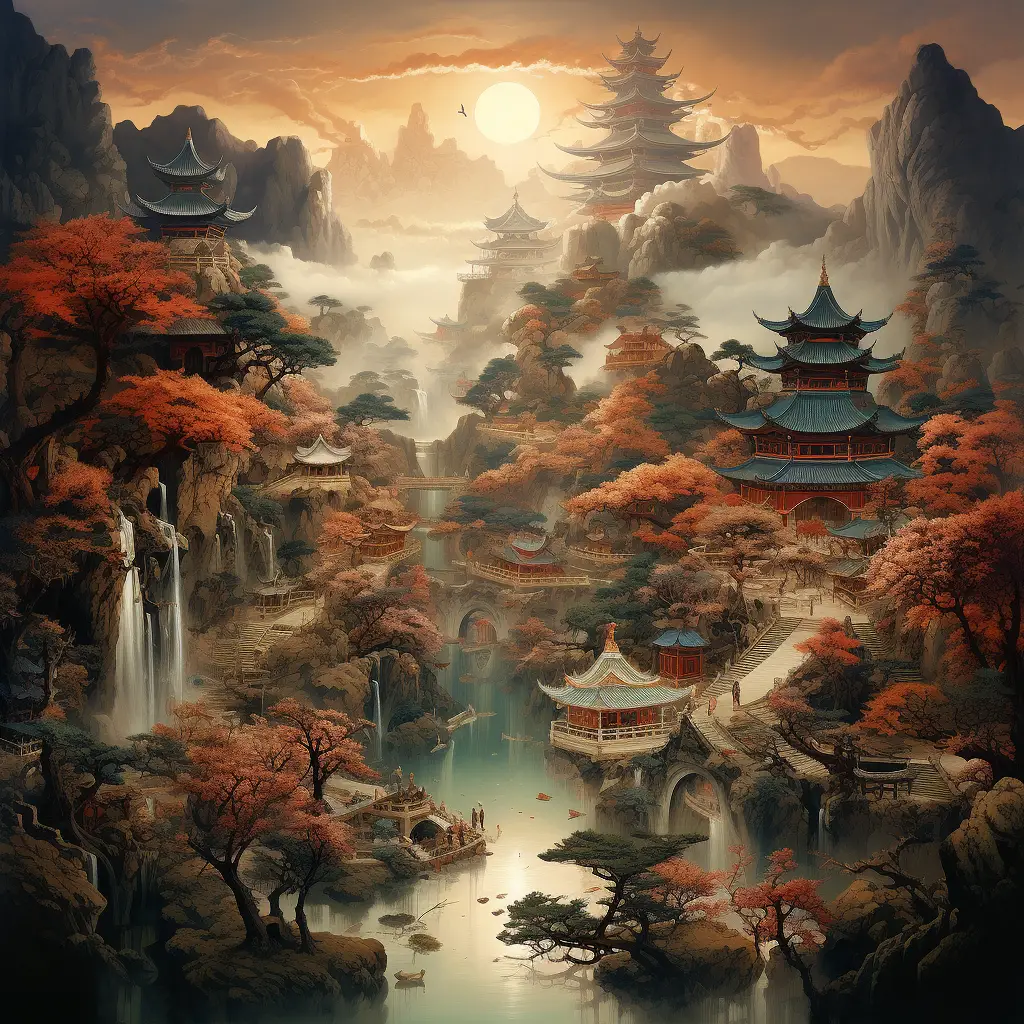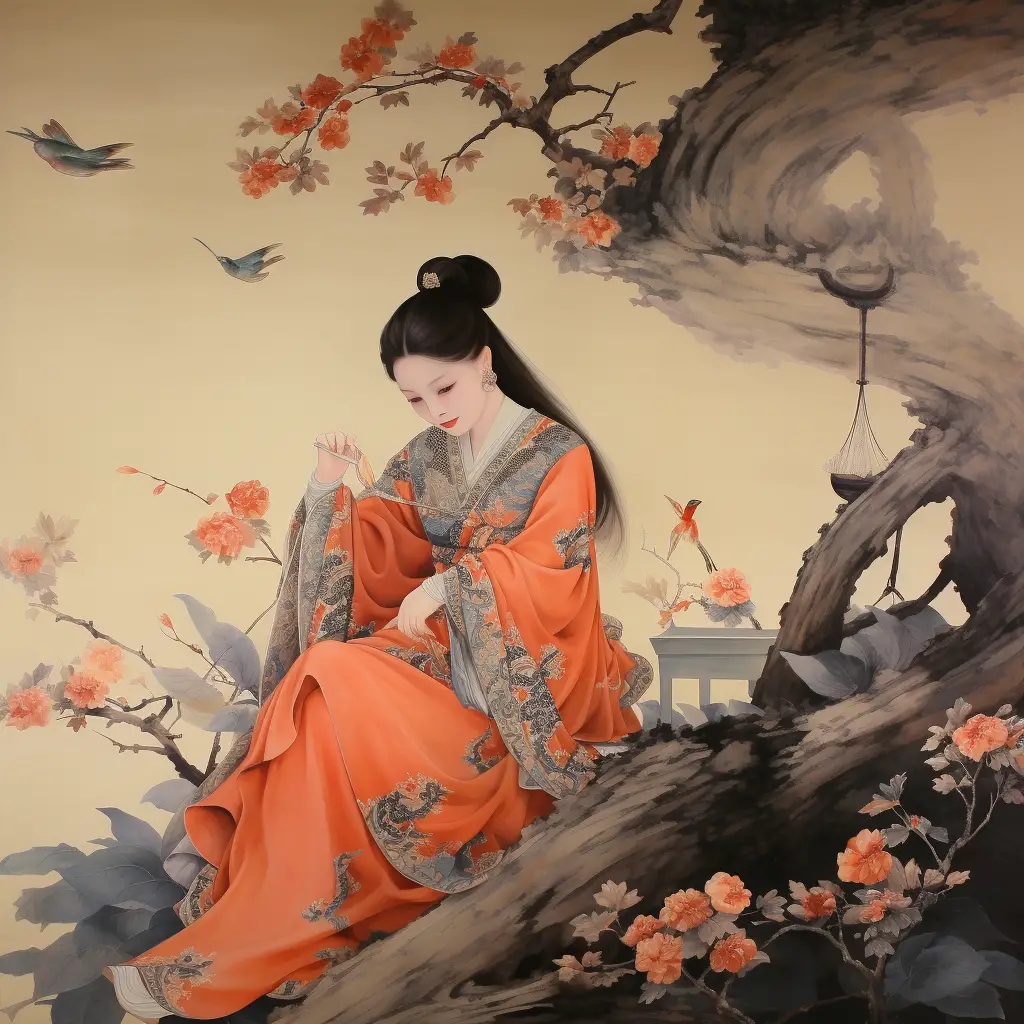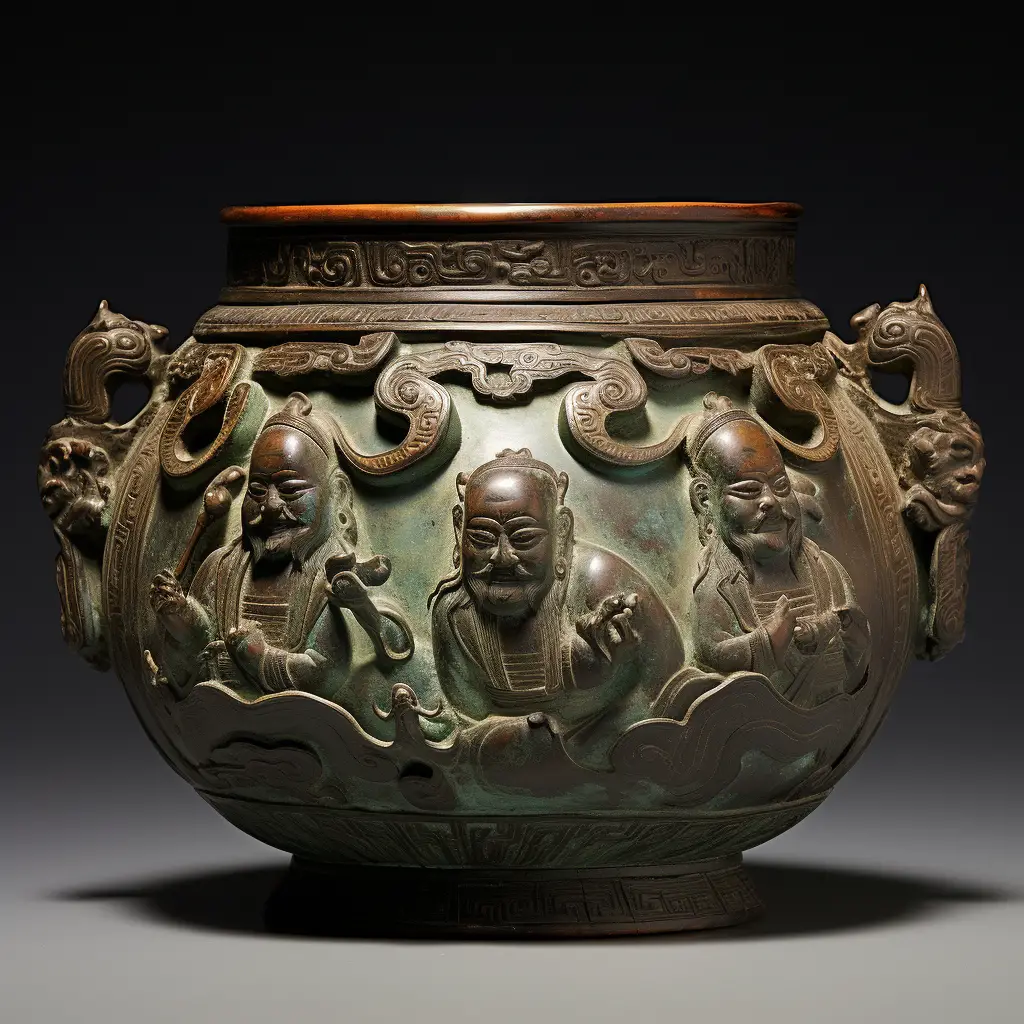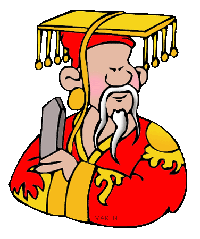Chinese Art
Traditional Chinese Art has varied due to changes in times and due to changes in dynasties. Important religious figures have also played a role in the development of Chinese art.
In fact, even the political leaders that have ruled over China have had an influence on Chinese art.
Of all the Chinese artworks, the most demonstrative are Bronze Vessels, Folk Toys, Calligraphy, Poetry, Cloisonne, Painting, Silk, Lacquer, Porcelain, Terracotta Army, Seals, Opera, and Shadow puppetry.
These works not only reflect the culture of China but also the talent which people possessed.

Ancient China Art Facts for Kids
- Chinese art dates back over 10,000 years.
- Calligraphy is a respected Chinese art form.
- Terracotta Army was built in 210 BC.
- Jade was highly prized in ancient China.
- Chinese pottery is called “porcelain.”
- Dragons are a common motif in art.
- Scrolls were often used for painting.
- Silk was used for painting and calligraphy.
- Ancient artists didn’t use perspective.
- Buddhism greatly influenced Chinese art.
Chinese Calligraphy
Chinese Calligraphy is an ancient art form in China, dating back more than 2000 years. It’s about expressing emotions and ideas through strokes and patterns. The tools used for calligraphy include a brush made of animal hair, ink from soot and animal glue, and paper or silk.
Chinese calligraphy focuses on five different script types, each with its own unique style. Chinese children start learning calligraphy in school as it’s considered an essential part of their culture and education. This art form also helps to improve concentration and patience.
Chinese Pottery and Porcelain
Ancient China is renowned for its incredible contributions to the world of art, one of which is the development of pottery and porcelain. Chinese pottery, dating back to 20,000 years ago, was initially simple and practical. However, over time, it evolved into intricate and aesthetically pleasing designs.
By the time of the Han Dynasty (206 BC-220 AD), the Chinese had mastered the art of making porcelain, widely known as “china” due to its origin. This porcelain was often painted with beautiful designs and was so delicate that it was almost translucent. Remarkably, Chinese artisans were the first in the world to make porcelain, and their techniques were so advanced that they remained a secret for centuries.
The pottery and porcelain from ancient China are not just objects; they represent the culture, traditions, and technological advancement of that era.
Silk Painting

Silk painting is a distinctive art form from ancient China, renowned for its silk production. The Chinese discovered silk-making from silkworm cocoons around 2600 B.C. and soon used this delicate material as a canvas. Artists used brushes to apply vibrant, natural dyes and inks to the silk, creating stunning portraits, landscapes, and history or mythology scenes.
This art form required immense skill and patience; the silk was so delicate that there was no room for error. Because silk was highly valued and expensive, silk paintings were often made for royalty or wealthy patrons. Today, these ancient Chinese silk paintings provide us with a glimpse into this fascinating country’s rich history and culture.
Chinese Landscape Painting
The text seems concise and necessary for explaining Chinese landscape painting. There is no text that needs to be removed to help with macro semantics, micro semantics, and sequence modeling. The passage flows well and each sentence contributes to the overall understanding of the topic.
Buddhist Art in Ancient China
Buddhist Art in Ancient China is an exciting topic for kids to explore. Originating from India, Buddhism arrived in China around the first century AD, bringing along with it new forms of artistic expression. Many Ancient Chinese Buddhist artworks are sculptures, often made from bronze or stone, and intricately carved with images of Buddha and other important figures.
These sculptures were usually painted or gilded to add color and elegance. Ancient Chinese Buddhist art also includes wall paintings, manuscripts, and ornate objects used for worship. The art often depicts stories from Buddha’s life, Buddhist deities, and symbols like the lotus flower, which represents purity and enlightenment. This art played a significant role in spreading Buddhism throughout China, teaching people about the religion’s values and beliefs.
Chinese Bronze Casting

Ancient China was renowned for its bronze casting, a skill that peaked during the Shang and Zhou dynasties, roughly between 1700 BCE and 256 BCE. Chinese artisans used a technique known as piece-mold casting to create intricate designs and inscriptions on bronze works.
They would first make a model of the object, then break it into sections, which served as molds for the molten bronze. Once the bronze hardened, they would reassemble the pieces, resulting in detailed vessels, weapons, and ritual objects.
This unique process set Chinese bronze casting apart from other ancient civilizations and made it a significant part of their art history.
Ancient Chinese Architecture
Ancient Chinese architecture is a fascinating aspect of art history, showcasing the creativity and ingenuity of the culture. The Great Wall of China, built over 2,000 years ago, stretching over 13,000 miles, and visible from space, is one of the most famous examples.
Ancient Chinese architects also developed complex techniques for building structures like palaces and temples without using nails or glue. They carved wooden beams and joints to fit together like puzzle pieces, known as ‘dougong’, a unique feature of traditional Chinese buildings.
These structures were often decorated with paintings and carvings, reflecting the importance of art in ancient Chinese society.
Chinese Jade Carving
Ancient Chinese art is known for its variety and beauty, and one of the most distinguished forms of this art is Jade carving. Jade, a semi-precious stone that was cherished by the ancient Chinese, was often carved into different shapes and designs to create stunning pieces of artwork.
The ancient Chinese believed Jade had protective and healing properties, so it was commonly used to make religious artifacts, statues, and jewelry. Jade carving was a meticulous craft that required a lot of skill and patience as the stone is very hard.
The intricate designs and patterns found on these jade carvings give us a fascinating insight into China’s rich history and culture. So, next time when you see a Chinese Jade carving, remember, it’s not just a piece of art, but a symbol of ancient Chinese beliefs and their deep-rooted love for nature and beauty.
Chinese Lacquerware
This ancient art form dates back to the Neolithic period, over 7,000 years ago! Chinese craftsmen coated objects such as boxes, furniture, and sculptures with layers of a special sap from the lacquer tree. Each layer had to dry before the next one could be applied, making it a very time-consuming process. This technique resulted in the creation of beautiful, glossy, and waterproof pieces.
Artists often engraved or painted intricate designs on the lacquer, including dragons, flowers, or scenes from everyday life. The finest lacquerware was often used by emperors and nobles, demonstrating the high value placed on this skilled craft in ancient China.
Chinese Ink and Wash Painting
Chinese Ink and Wash Painting is a fascinating aspect of ancient China’s art that kids would enjoy learning about. This unique painting technique was developed over a thousand years ago and primarily uses black ink. This form of art focuses on capturing the spirit of the subject.
The artists often left white spaces in their compositions to represent water, mist, or sky. Painting tools were considered treasured possessions and included brushes made from animal hair, ink made from pine soot, and special paper or silk.
Bronze Vessels
These were invented some 5,000 years ago. Bronze is an alloy of copper and tin with a lower melting point and a higher degree of hardness than those copper. When it is cast, bronze has the advantages of minimum air bubble production and maximum flow quality.
This can give objects razor-sharp edges, thus making them suitable materials for durable weapons, tools, and containers. China produced bronze objects as long as four thousand years ago in the period of the Lungshan culture and brought the use of bronze vessels to a height in the Shang and Chou dynasties.
Folk Toys
Folk toys capture the customs and beliefs of ancient China. These toys help us to understand Chinese culture. These toys serve as a means through which Chinese people can express their hopes and desires, as well as their affection toward their children.
Filled with a multitude of meanings, Chinese folk toys bring beauty and art into ordinary lives.
Calligraphy
The Ancient Chinese considered writing an important form of art. Calligraphy is a highly stylish form of writing. To produce Chinese characters one needs a brush, paper, ink stick, and ink stone.
These are referred to as the “Four Treasures of the Study”. It is essential to learn these tools in order to learn calligraphy.
Poetry
Poetry too was an important part of art. Du Fu, Li Bai, and Su Shi are considered among the best ancient poets, and there are five major kinds of ancient poetic styles called Shi, Ci, Ge, Qu, and Fu. During the Tang Dynasty, poetry became so important that writing poetry was part of the examinations to become a civil servant and work for the government.
Cloisonne
Cloisonne is an ancient technique for decorating metalwork objects. The term “cloisonné” refers to the technique as well as to the finished product. It comes from the French word “cloison” which means “partition”.
The utensils are usually made of copper or bronze over which thin copper wire is glued or welded to draw decorative designs or themes. Cloisonne came to China in the early fourteenth to the late fifteenth century. The process became very popular with court artisans and the earliest recorded piece is from the Ming Xuande Emperor’s rule in 1426.
The Yunan province was supposed to be the first to produce unique pieces as it was under Mongol rule. However, early Chinese Cloisonne was so delicate that very few imperial pieces have survived to date. Most of these pieces are now stored in the Palace Museum.
Painting
Paintings were often inspired by poetry and combined with calligraphy. Many paintings were sceneries that featured mountains, homes, birds, trees, and water.
Traditional painting involves the same techniques as required in calligraphy. Fan Kuan painted one of the finest landscapes known as The Travelers amid Mountains and Streams.
Silk
The Ancient Chinese mastered the art of making silk from the cocoons of silkworms. They kept this technique secret for hundreds of years as silk was desired by other nations and enabled China to become rich.
They also dyed silk into intricate and decorative patterns.
Lacquer
Lacquer is a clear coating made from the sap of sumac trees. It was used to add beauty and shine to many pieces of art. It also was used to protect art from getting damaged, especially from bugs.
Porcelain
Fine Chinese porcelain was not only an important art but also became an important export.
During the Ming Dynasty, blue and white vases became highly priced and were sold to rich people throughout Europe and Asia
Terracotta Army
This is one of the greatest examples of Ancient Chinese art. Terracotta Army was made for the burial of the first emperor of China, Qin Shi Huang.
This was done to protect him after life. Terracotta Army includes sculptures of 8000 soldiers and 520 horses. Each sculpture of a soldier has been given a unique face. These sculptures were life-sized. The minutest details such as their uniform, weapon, and armor have been well-reflected.
Opera
Chinese opera is recognized as one of the three oldest dramatic art forms in the world. It is a combination of music, art, and literature. During the Tang Dynasty, Emperor Taizong established an opera school by the name Liyuan (Pear Garden).
From that time on, performers of Chinese opera were referred to as ‘disciples of the pear garden’. Since the Yuan Dynasty, it has been encouraged by court officials and emperors and has become a traditional art form.
Shadow Puppetry
In this, shadows of the puppets are projected onto the white screen. In China, shadow plays are often folk tales and legends of the past, many based on Chinese opera themes.
Traditional shadow puppets are flat and made of leather. Areas within the puppet are pressed out with sharp knives. These areas suggest facial features and help define clothing. The puppets are made from separate pieces and joined together with wire or string.
They are controlled by long rods and moved behind a white translucent screen made from paper or cloth. A lamp on the puppeteer’s side of the stage provides the light while the audience on the other side sees the moving shadows.
Other forms of art that took place in Ancient China included lantern making, paper cutting, and seal making.


